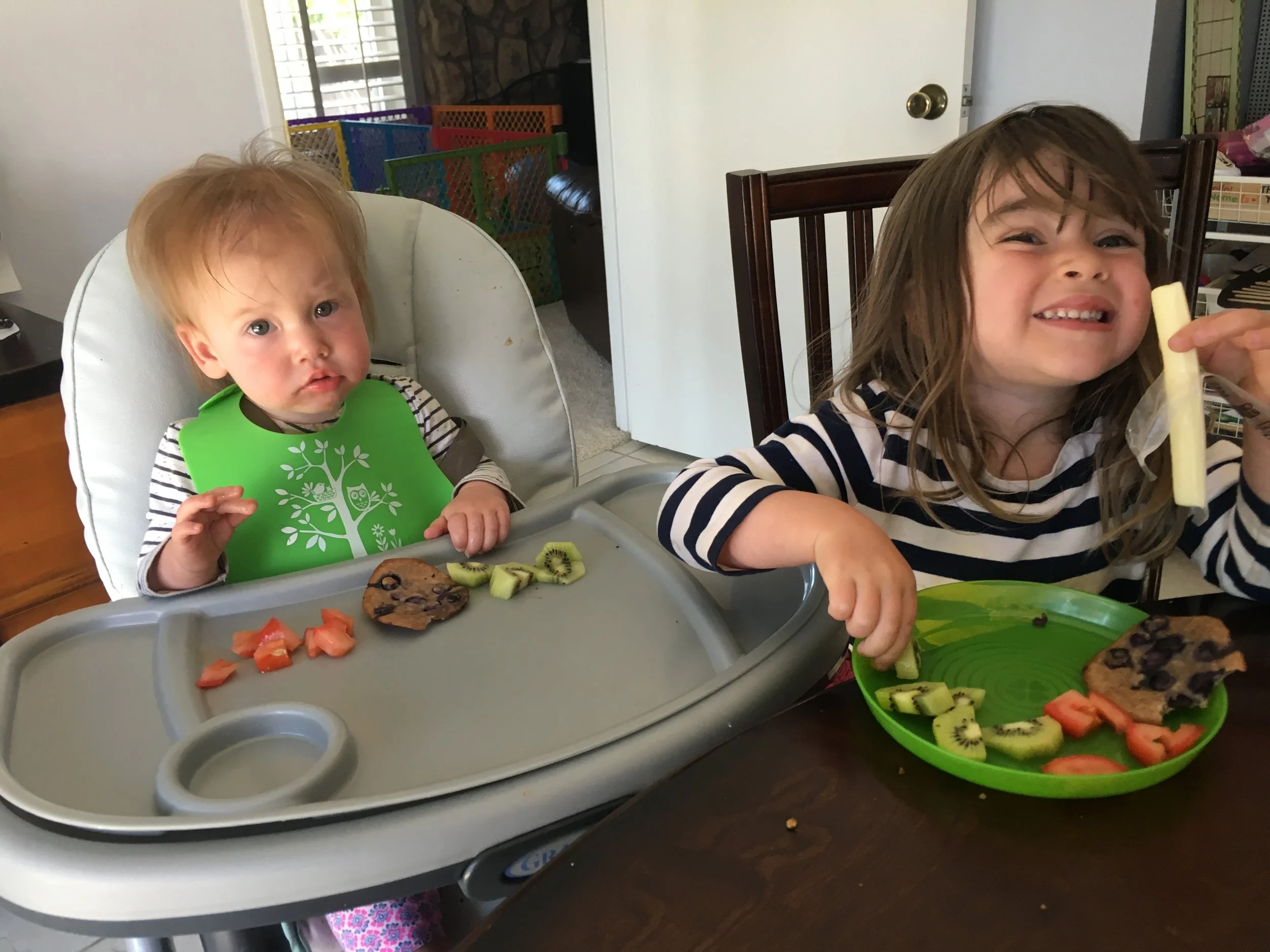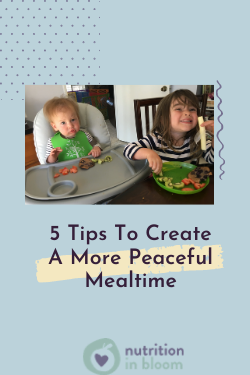5 Tips to Create a More Peaceful Mealtime
Mealtimes can be stressful with toddlers and children. We want our kids to enjoy eating, and eat the food presented to them and meet their nutrient needs, but that doesn't happen at every meal. I follow, and recommend all my clients follow, the Division of Responsibility. As parents and caregivers, we can only control the what (food), when (timing of the meal) and where (where the food is presented). Our children are responsible for choosing how much and whether they are going to eat or not (as much as we wish we had control over this!). BUT there are many strategies we can use to make mealtime more pleasant. Here are my top 5 strategies for creating a more relaxed atmosphere at mealtime. And if you want more, join me at one of my upcoming classes, Peaceful Mealtimes: Effective Strategies for Feeding Toddlers, Preschoolers and Families.
1. Plan meals and snacks, and stay on a schedule. Work to have a daily schedule with predictable meals and snacks. Most toddlers need to eat every 2-3 hours, and for older children every 3-4 hours should be sufficient. We want to maximize hunger at meal and snack times which means not grazing throughout the day. Don't forget most beverages (besides water) have calories.
2. Follow the 75% preferred, 25% non-preferred rule with meals and snacks, and provide small portions of new foods. Many toddlers become fearful when new or non-preferred foods are presented. We can help them by offering some of these new foods with foods they already like. When serving meals, try to make most of that food being foods that you know they like or have eaten in the past, and some of the food is new. They will be more likely to try that new food. And do not pressure them in any way to try that new food (remembering, it might take up to 20 presentations of a new food before they will accept it).
3. Sit down for meals (parent and child). Mealtimes can be rushed with the business of life. Sometimes breakfast might be quick, or your child might be eating while you prepare their lunch or finish the dishes. When you can, have family meals. This might be once a day or a few times per week. Children learn best by example, so by modeling a balanced, relaxed meal, children will learn to eat this way.
4. Avoid being a short order cook. This can be a challenge for many parents: we want our kids to eat. But it's important to remember to offer a variety of foods. That doesn't mean you are going to choose something you know your child does not like or something completely new (see tip #2), but you, as the parent, are responsible for choosing the foods offered.
Alex, 1 year, and Sydney, 3.5 years, enjoying lunch.
5. Make mealtimes fun and encourage conversation during mealtime that does not focus on how your child is eating. Family meals should not focus on the meal itself. Talk to your family about their day. Mealtimes may be one of the only times in the day the family is together, so use that to your advantage by spending some quality time together. And if you want to talk about the food, talk about how the food tastes, feels, smells or looks (ie: this carrot is crunchy).
And Bonus Tip #6: Relax. Our children have the innate ability to regulate their hunger and satiety. Know that they are meeting their needs with the foods they are eating. Day to day intake may vary so much, but it is about the overall eating pattern that matters. Contact me if you want to discuss this further.
Want to dive deeper into HOW to make mealtimes more peaceful? Join me on September 8th at my class, Peaceful Mealtimes: Effective Strategies for Feeding Toddlers and Families.



